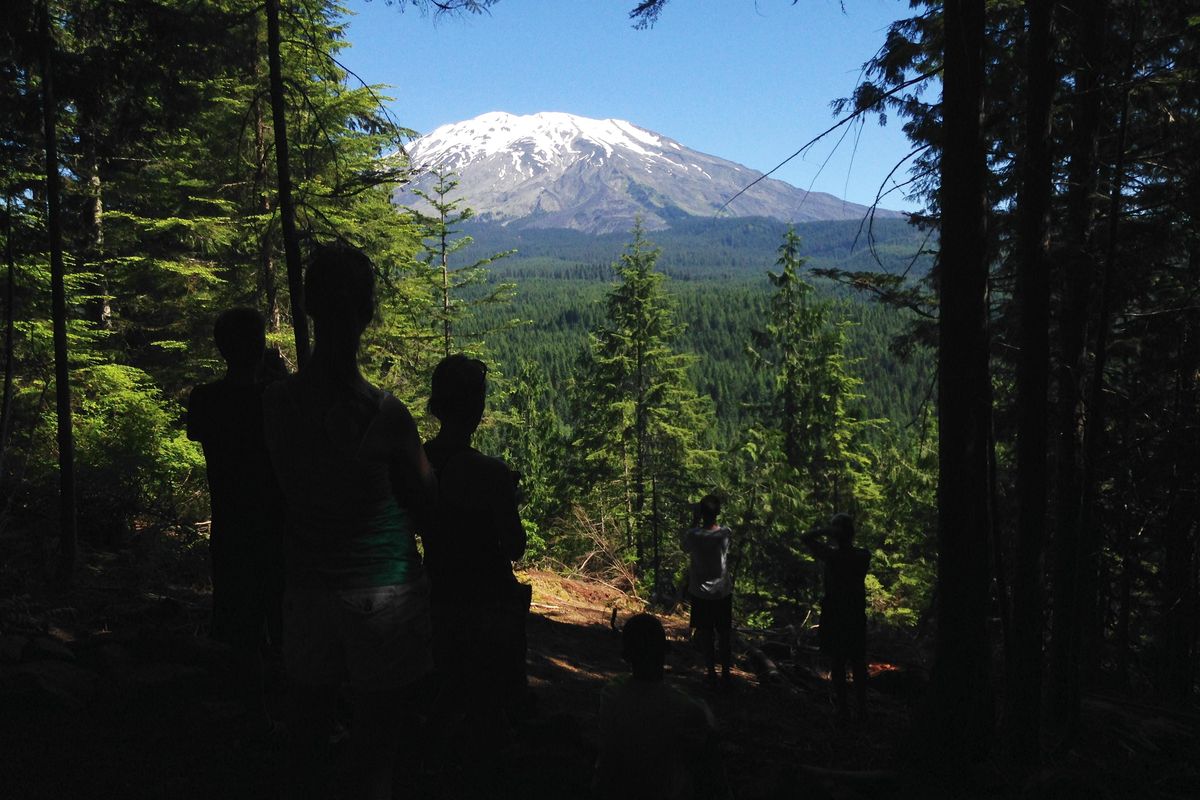Mount St. Helens’ Coldwater hike samples everything volcano has to offer

If you’re hunting for wildflowers and an inspirational experience at Mount St. Helens, now’s the time to hit trail 230A, which ascends the ridge on the east side of Coldwater Lake.
The meadows high above the lake are dancing with red Indian paintbrush, white daisies and blue mountain lupine. Foxglove and penstemon add splashes of purple. False dandelion dapples the slopes in tufts of yellow. Even the dense alder forest that creeps up the slope from the lake is blanketed with the small white and yellow flowers.
There’s a lot more than just dainty alpine blooms to enjoy on this trip. But the thing that strikes you most on this trail is the power of the life force. Except for the highest meadows, every square inch of ground is spoken for by some plant. Bees and hummingbirds are having a nectar heyday, and bears and elk meander through the area (judging from the scat and hoof prints that hikers encounter along the trail). No doubt, bears occasionally feast on the anthills that dot the terrain.
A hike along this trail affirms that life is more powerful than death.
Trail 230A perhaps is one of the more versatile trails in the Mount St. Helens National Volcanic Monument, in that it can be hiked as a one-way trip or linked up with other trails to circumnavigate Coldwater Lake or access the Mount Margaret Backcountry and Coldwater Peak. Hiking the 3.1 miles to the first trail junction, where the trail deteriorates, is about a 4-hour, round-trip excursion.
The trail climbs through the shoulder of a ridge that was near the heart of Mount St. Helens’ blast zone, one ridge line north of Johnston Ridge. It had been logged just before the eruption. So there are no blown-down trees – and also why there was little that survived to jump-start the recovery there.
Nature is doing a fine rehab job, as is apparent from the first steps you take from the paved and well-marked trailhead, which is along Spirit Lake Memorial Highway just as it enters the canyon of South Coldwater Creek. A dense alder forest clings to the slope of the ridge that divides Coldwater Lake from South Coldwater Creek. The first mile or so of this trail is steep (most of the 1,600 feet of elevation gain on this hike takes place within less than 2 miles). The alder, all of it grown since the 1980 eruption, are 40 to 50 feet high.
There are hints that the alder forest is perhaps starting to thin out, as the forest floor is filled with dappled light and a lush array of brush. As the alders mature and die, they’ll make room for conifers to sprout and thrive in soils enriched by the nitrogen-fixing alder. Perhaps this will take another three decades or so (alders only live 60 to 100 years).
The real treat of this hike, though, is when you climb up out of the forest to the ridge line. Mount St. Helens peeks above Johnston Ridge to the southeast. Meadows are packed with wildflowers that are just reaching peak bloom. Coldwater Lake, like a deep blue sapphire, lies below, stretching 3 miles northeastward toward Minnie Peak and the Mount Margaret Backcountry.
Hikers soon encounter an old logging winch, twisted logging tower and a bulldozer sandblasted by the eruption. Rusting, inch-thick logging cables still lie across the trail. These machines will take centuries to rust away, but eventually they will be absorbed by the forest that replaces the one these machines helped cut away.
The machinery is your first clue that the upper portion of Trail 230A traverses an old logging road. The presence of this road – and others sliced into the steep slope on the northwest side of Coldwater Lake – leaves one questioning why roads were cut into such steep terrain in the first place. Several washouts and erosion-cut gullies originating from these roads gash the hillsides, creating fans of alluvial debris in the lake.
The volcano, of course, did much worse ecological damage. Rocks and pumice scattered off the trail – the shrapnel from the lateral explosion that blasted the landscape on May 18, 1980 – is a reminder of that. But even on the ridge tops, where water is scarce, winter is harsh and summer is brutal, life continues to conquer the once-dead landscape. Besides the wildflowers, small firs eke out an existence, despite the nibbling of predators. Alders are here, too, but they’ve reduced to multisuckered shrubs by hungry deer and elk.
Although it was logged away nearly four decades ago, it’s still possible to envision the old growth forest that fell to society’s demand for lumber nearly four decades ago. Many a beefy stump still stubble the landscape, not only showing the size of those trees, but the remarkable open feeling of a mature forest.
In a couple of centuries, the forest emerging here will resemble that one. Here’s your chance to see what it looked like as a youngster.